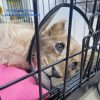Experts have created the “Holy Grail” for fighting aging
Scientists are one step closer to unlocking the secrets of fighting aging. They announced the development of a «holy grail» drug that disables a protein associated with accelerated aging, and found that the treatment increased the lifespan of rats by 25 percent.
 Photo: ru.freepik.com
Photo: ru.freepik.com
Just 25 weeks after starting therapy, the animals' risk of developing cancer decreased, gray hairs disappeared, vision improved and muscle function improved, writes the Daily Mail. Animals aged 75 weeks, equivalent to the age of a 55-year-old human, lived an average of 155 weeks, compared with 120 weeks for those who were not treated.
Humans inherited a protein called interleukin-11 from fish about 450 million years ago. This gene has been linked to chronic inflammation, scarring of organ tissue, metabolic disorders, muscle atrophy and cardiac fibrosis, writes the Daily Mail.
“These results are very interesting,” said Professor Stuart Cook, who co-authored the study, from the UK Medical Research Council Medical Sciences Laboratory (MRC LMS). “The treated mice had fewer cancers and did not show the usual signs. aging and frailty, but we also observed a decrease in muscle atrophy and an increase in muscle strength.
In other words, older mice treated with anti-IL11 were healthier.
“Although these results were only obtained in mice, it raises the possibility that the drugs could have a similar effect in older people,” continues Professor Cook. “Clinical trials of anti-IL-11 drugs are currently underway to treat other diseases, which potentially opens up exciting opportunities to study their effects on older people in the future.»
Professor Cook told the BBC that although trials were not yet completed, the findings suggested the drug was safe for humans.
p>
The team conducted two experiments using the first rats genetically modified to eliminate IL-11. The removal extended the animals' lifespan by more than 20 percent on average.
However, «impressive» results were obtained when they were given an anti-IL-11 drug, which stopped the age-related effects of the protein on the body.
The lifespan of both male and female rats increased by 25 percent. Not only did the treatment provide protection against chronic diseases and age-related loss of muscle mass and strength, it also reduced the rate at which telomeres shortened. Telomeres are the caps that sit at the ends of each chromosome and hold them together, the Daily Mail explains.
As we get older, telomeres wear out and become shorter, leading to diseases such as cancer, Alzheimer's and Parkinson's.
«Our goal is that anti-IL-11 therapy will one day be used as widely as possible so that people around the world can live healthier lives for longer,» said Professor Cook. Treatments for aging are not clearly defined, and raising funds for clinical trials in this area is very challenging.»
Researchers have been studying IL-11 for years, and in 2018 they were the first to show that IL-11 is a profibrotic and proinflammatory protein, overturning years of mischaracterization as an antifibrotic and anti-inflammatory agent.
“This project started back in 2017 when a colleague sent us some tissue samples for another project,” said Associate Professor Anissa Widjaja, a co-author of the paper, from Duke NUS Medical School in Singapore. “Out of curiosity, we ran some experiments to test IL-11 levels. From the measurements, we could clearly see that IL-11 levels increased with age, and that’s when we got really excited! We found that increased levels lead to negative consequences for the body, such as inflammation and hindering organ healing and regeneration after injury. Although our work was carried out in mice, we hope that these findings will have important implications for human health, given that we have seen similar effects in studies of human cells and tissues. This research is an important step towards better understanding ageing, and we have demonstrated a therapy in mice that has the potential to extend healthy ageing by reducing frailty and the physiological manifestations of ageing.”























































Свежие комментарии